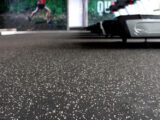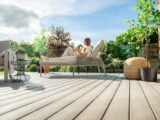
Cool Savings: How Metal Roofs Cut Energy Costs and Carbon Footprints
April 23, 2025 Off By Issac NolanRising energy prices and increasing environmental awareness have homeowners continuously looking for creative methods to cut their carbon footprint and save money. Adoption of metal roofing is one really common fix that is catching hold. Thanks to their great reflecting qualities, metal roofs have a special ability to greatly reduce energy expenditures beyond their visual attractiveness and durability. Examining how metal roofs keep homes cooler in summer, lower HVAC load, and increase general energy efficiency, this paper explores the science underlying this cooling capacity.
The Power of Reflective Coatings
The secret to a metal roof’s cooling power is its tailored reflecting coatings. Unlike conventional asphalt shingles, which absorb a lot of solar heat, metal roofs are sometimes covered with highly reflecting paints. Usually made of sophisticated minerals like titanium dioxide, these pigments are meant to bounce back solar energy, therefore stopping it from getting through the roof surface. A cooler house results from this reflecting effect greatly lowering the heat flow into the attic area.
Panel Design and Ventilation
Beyond the reflecting coatings, metal roofing panel design helps to explain their cooling efficiency. An air gap exists between the metal panels and the roof deck in many metal roofing systems. This void opens a ventilation channel allowing air to pass, therefore dispersing any heat that could have been absorbed. Among the benefits of metal roofs is this effective ventilation system, which, combined with the reflecting coatings, reduces heat accumulation inside the house.
Reducing HVAC Strain and Energy Consumption
Reflective coatings and panel design reduce home air conditioning load. With less heat entering the house, the HVAC system works less to maintain a comfortable temperature. This reduces energy use and costs. Metal roofs can save cooling costs by 25{0f0f956d7579fe9490c069a4f5e7773665de86847739b8feb26399e5e6edad85} compared to traditional roofing.
Long-Term Cost Savings and Environmental Benefits
Although the initial outlay for a metal roof could be more than for asphalt shingles, over time the savings are indisputable. It makes economic sense given the lower energy costs and the extraordinary lifetime and durability of the roof, often exceeding 50 years. Moreover, metal roofs are usually composed of recycled materials and, at the end of their lifetime, are totally recyclable, so they are a good choice for the environment. Metal roofs also help to lower carbon footprint by cutting energy usage, so supporting the effort against climate change.
Conclusion
Selecting the appropriate type of metal roof will help to maximize the energy-saving advantages. Think about elements including the particular reflective coating, panel layout, and local temperature. Choose metal roofs with high Solar Reflectance Index (SRI) values to show how well they reflect solar radiation. Making sure ideal energy efficiency and long-term savings by means of a suitable metal roofing solution for your particular requirements depends on consulting with a qualified roofing contractor.







